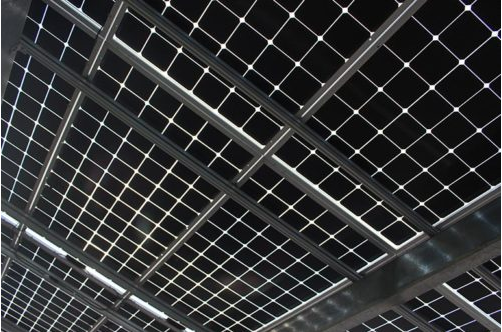Solar advocacy group SEIA, along with co-plaintiffs NextEra Energy, Invenergy Renewables and EDF Renewables, have successfully petitioned the U.S. Court of International Trade (CIT) to reinstate bifacial solar modules’ exemption from the Section 201 tariffs on imported solar modules. SEIA began its campaign for bifacial exclusion to the new presidential administration in February 2021, not necessarily citing any industry-related reasonings but instead referencing various violations of procedural requirements around the Trade Act itself.
Today’s decision means that imported bifacial modules are once again exempt from Section 201 tariffs, effective immediately. The Section 201 tariffs are back to 15% for this fourth year, and any imports from the past year under the adjusted 18% tariff are eligible for refunds with interest.
To refresh everyone’s memories: Beginning in February 2018, imported crystalline silicon cells, modules and AC/integrated modules were tariffed 30% by the Trump Administration as part of a four-year outline. Imports received a 25% tariff in 2019, a 20% tariff in 2020 and were scheduled for a 15% tariff in 2021. Various exemptions to the tariffs were allowed, mainly small-wattage off-grid panels, but bifacial modules were granted a full exemption in June 2019. Bifacial modules have been growing in popularity in the utility-scale solar market, and with no domestic manufacturers able to meet the demand, the tariff exemption was seen as a break to the price-conscious utility market.
After reviewing International Trade Commission (ITC) reports and determining that domestic PV panel manufacturing was increasing, President Trump in October 2020 decided that the bifacial exemption was undermining the objectives of the original Section 201 safeguard measures (which was to prop up U.S. solar manufacturing), so bifacial modules would lose their exemption in November 2020. And since bifacial imports were not tariffed for over a year, Trump adjusted the fourth-year rate of the overall tariff from 15% to 18%.
Today’s CIT decision allows imported bifacial modules to be exempt from the Section 201 tariffs (scheduled to end in February 2022), and this year’s tariff rate is back to 15%.
Judge Gary S. Katzmann, who revoked the bifacial exemption in 2020, released today’s decision to put bifacial modules back on the exemption list.
“The decision by the U.S. Court of International Trade to strike down an order by President Trump to change the step-down rate for the Section 201 tariffs and reverse the bifacial module exclusion was clearly the right conclusion. Both actions were an unlawful attempt to harshen the Section 201 tariffs,” said Abigail Ross Hopper, president and CEO of SEIA. “We are committed to building the U.S. solar manufacturing supply chain and we believe there are policies in the Build Back Better Act that will help grow American manufacturing. We look forward to working with the Biden administration and Congress to get these critical policies, including Senator John Ossoff’s Solar Energy Manufacturing for America Act, over the finish line.”
The ITC has been petitioned to extend the Section 201 tariffs for another four years, and discussions are ongoing. A virtual hearing was held earlier this month, and you can see testimonies here. The ITC should present its suggestion to President Biden within the next few weeks, and the president will have the final say on whether to extend the tariffs.






